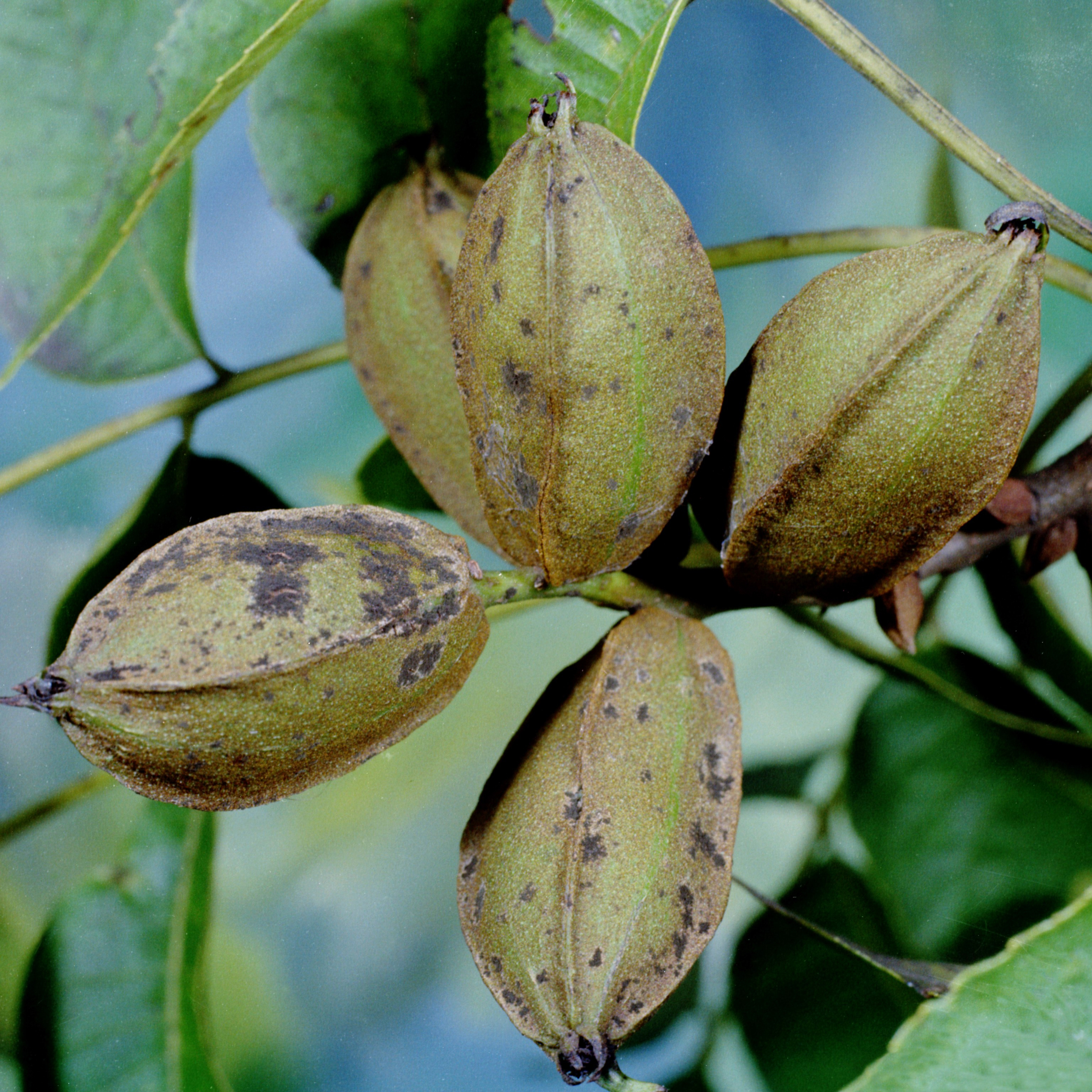|
Venturia Effusa
''Venturia effusa'' is a sexual species in the fungal genus '' Venturia''. ''Venturia effusa'' was first described in 1885. ''Venturia effusa'' is a fungal pathogen of pecan trees (''Carya illinoinensis''), on which it causes pecan scab. The fungus is highly pathogenic and causes substantial economic losses throughout the southeastern United States. Genome The complete genome In the fields of molecular biology and genetics, a genome is all the genetic information of an organism. It consists of nucleotide sequences of DNA (or RNA in RNA viruses). The nuclear genome includes protein-coding genes and non-coding ge ... sequence of ''Venturia effusa'', the first complete genome sequence of any species in the genus '' Venturia'', was reported in 2019. The 45 Mb genome comprises 20 chromosomes, ranging from 0.56 to 4.1 Mb, including approximately 10,800 genes. References {{Taxonbar, from=Q79274067 Venturiaceae ... [...More Info...] [...Related Items...] OR: [Wikipedia] [Google] [Baidu] |
Venturia (fungus)
''Venturia'' is a genus of fungi in the family Venturiaceae. First identified in 1882, species in the genus are plant pathogens. ''Venturia'' is widespread and the genus contains an estimated 58 species, or 130 species. Anamorphs were historically represented in the genus ''Fusicladium''. The genus was circumscription (taxonomy), circumscribed by Pier Andrea Saccardo in Syll. Fung. vol.1 on page 586 in 1882. The genus name of ''Venturia'' is in honour of Carlo Antonio Maria Venturi (1805–1864), who was an Italian mycologist. Species As accepted by Species Fungorum; *''Venturia acerina'' *''Venturia aceris'' *''Venturia achilleae'' *''Venturia adusta'' *''Venturia aesculi'' *''Venturia alaskensis'' *''Venturia allii'' *''Venturia alnea'' *''Venturia anemones'' *''Venturia antherici'' *''Venturia asperata'' *''Venturia atriseda'' *''Venturia aucupariae'' *''Venturia austrogermanica'' *''Venturia betulina'' *''Venturia bistortae'' *''Venturia borealis'' *''Ventu ... [...More Info...] [...Related Items...] OR: [Wikipedia] [Google] [Baidu] |
Pecan
The pecan (''Carya illinoinensis'') is a species of hickory native to the southern United States and northern Mexico in the region of the Mississippi River. The tree is cultivated for its seed in the southern United States, primarily in Georgia, New Mexico, Texas, and Mexico, which produces nearly half of the world total. The seed is an edible nut used as a snack and in various recipes, such as praline candy and pecan pie. The pecan is the state nut of Alabama, Arkansas, California, and Texas and is also the state tree of Texas. Name "Pecan" is from an Algonquin word, variously referring to pecans, walnuts, and hickory nuts. There are many pronunciations, some regional and others not.See "Pecan" at Wiktionary. The most common American pronunciation is . There is little agreement in the United States regarding the "correct" pronunciation, even regionally. Growth The pecan tree is a large deciduous tree, growing to in height, rarely to .Flora of North America''Carya illinoi ... [...More Info...] [...Related Items...] OR: [Wikipedia] [Google] [Baidu] |
Pecan Scab
Pecan scab is the most economically significant disease of pecan trees (''Carya illinoinensis'') in the southeastern United States.Sanderlin, R. S. (n.d.). Pecan scab disease. Retrieved from http://www.lsuagcenter.com/NR/rdonlyres/A30CB512-CDB1-4DFB-8D41-9E6086DEF9EE/70679/ScabDisease_CorrectedName.pdf ''Venturia effusa'' is a fungal plant pathogen that causes pecan scab. The fungus causes lesions and tissue death on pecan twigs, petioles, leaves, nuts and shucks beginning in early spring, with multiple cycles of infection repeating until late summer. Wind and rain spread the fungus to a susceptible host. Control of the disease is achieved by fungicide, sanitation and, in some cases, quarantine.Smith, S., & Vann, S. (2013). Arkansas plant disease control products guide. Informally published manuscript, Division of Agriculture, University of Arkansas, Little Rock, AR, Retrieved from http://www.uaex.edu/Other_Areas/publications/PDF/MP154/pecan-diseases-commercial.pdf Since its first ... [...More Info...] [...Related Items...] OR: [Wikipedia] [Google] [Baidu] |
Genome
In the fields of molecular biology and genetics, a genome is all the genetic information of an organism. It consists of nucleotide sequences of DNA (or RNA in RNA viruses). The nuclear genome includes protein-coding genes and non-coding genes, other functional regions of the genome such as regulatory sequences (see non-coding DNA), and often a substantial fraction of 'junk' DNA with no evident function. Almost all eukaryotes have mitochondria and a small mitochondrial genome. Algae and plants also contain chloroplasts with a chloroplast genome. The study of the genome is called genomics. The genomes of many organisms have been sequenced and various regions have been annotated. The International Human Genome Project reported the sequence of the genome for ''Homo sapiens'' in 200The Human Genome Project although the initial "finished" sequence was missing 8% of the genome consisting mostly of repetitive sequences. With advancements in technology that could handle sequenci ... [...More Info...] [...Related Items...] OR: [Wikipedia] [Google] [Baidu] |


